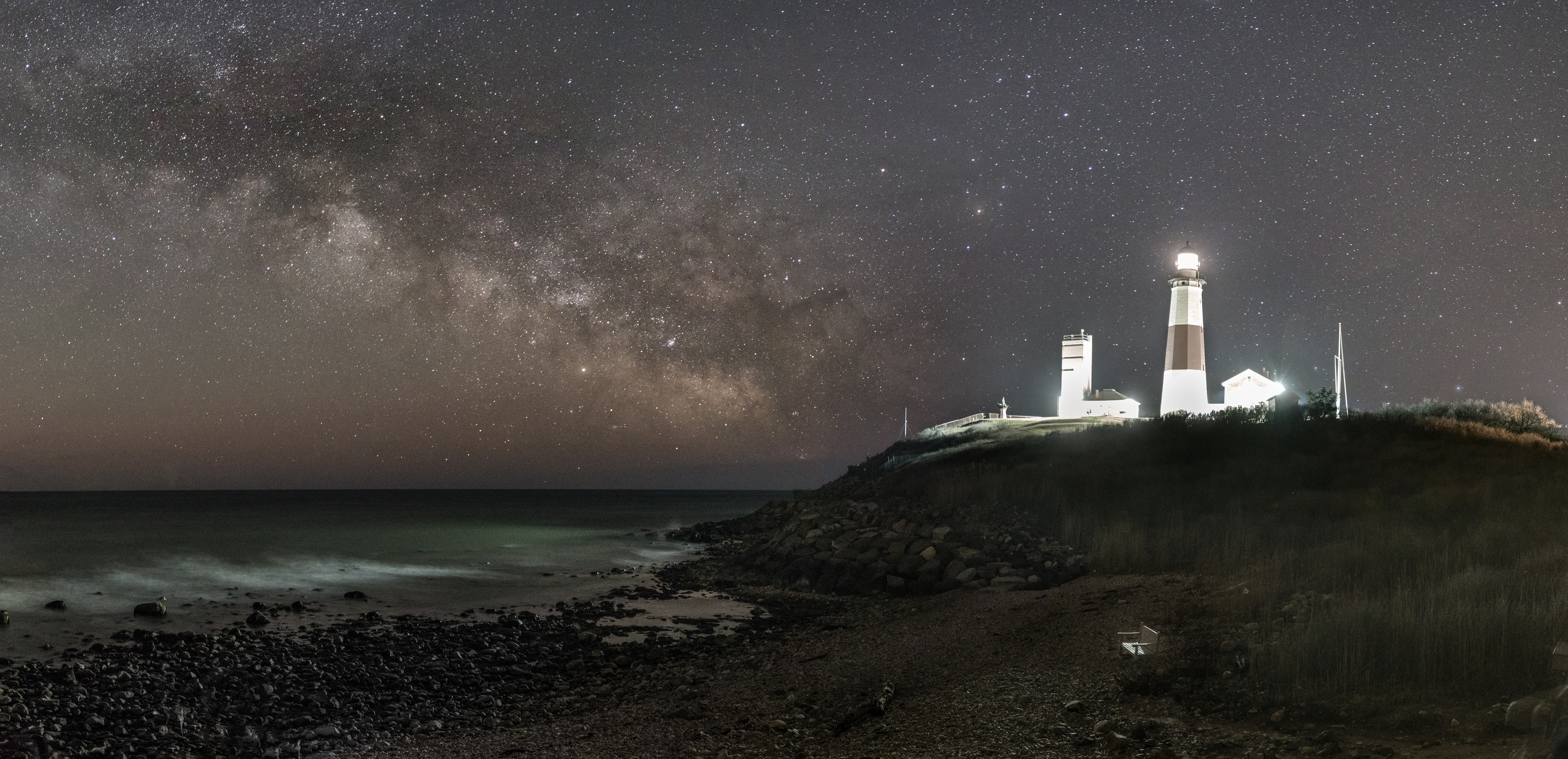Milky Way Glimmers Over Montauk Lighthouse in Sparkling Beach View

Every year in mid-February, the starry core of the Milky Way galaxy reappears in the night sky above the Northern Hemisphere after hiding below the horizon for nearly four months. Astrophotographer Chirag Upreti captured this stunning view of the Milky Way's annual debut near the Montauk Point Lighthouse, a National Historic Site on the easternmost tip of Long Island, on Feb. 18.
"On the East coast, clear skies are a luxury in February," Upreti told Space.com in an email, adding that this cloudless night offered an opportune moment for imaging the night sky. Upreti reveled in photographing this first image of the "Milky Way season." The galactic core of the Milky Way was visible just above the horizon for less than an hour before it faded away at sunrise. [Stunning Photos of Our Milky Way Galaxy]
"As night gave way to civil twilight, I began packing my gear, when a couple walked onto the beach, wrapped themselves in a blanket and sat on the same bench to witness the sunrise," Upreti wrote. "A warm moment on a cold morning, [this] brought a smile to my face as I wished them good morning and made my way out."
Both light pollution and the Milky Way's proximity to the horizon can make it difficult to photograph the galactic core in all its bright, starry glory, but Upreti was still able to get a clear view. "Fortunately, this time of the year, the Milky Way rises directly over the Atlantic Ocean," Upreti wrote. "Therefore, there are no light domes on the horizon — something I assumed was favorable for a low-lying Milky Way galactic core."
Despite glowing brilliantly near a cliffside on Turtle Hill, the Montauk Point Lighthouse wasn't bright enough to outshine the Milky Way during Upreti's photo shoot. The fully illuminated tower offers a stark contrast to the dark beach with the lone bench. Light pollution in this area ranks as "Class 4" on the Bortle Dark-Sky Scale, which means that the rural/suburban area has enough light pollution to obstruct some features of the Milky Way, according to Sky & Telescope.
Upreti used a Sony α7R III camera with a Tamron SP 15-30mm lens to shoot 10 panoramic images that he stitched together to create this composite image.
Follow us @Spacedotcom, Facebook and Google+. Original article on Space.com.
Get the Space.com Newsletter
Breaking space news, the latest updates on rocket launches, skywatching events and more!
Join our Space Forums to keep talking space on the latest missions, night sky and more! And if you have a news tip, correction or comment, let us know at: community@space.com.

Christine Lunsford joined the Space.com team in 2010 as a freelance producer and later became a contributing writer, covering astrophotography images, astronomy photos and amazing space galleries and more. During her more than 10 years with Space.com, oversaw the site's monthly skywatching updates and produced overnight features and stories on the latest space discoveries. She enjoys learning about subjects of all kinds.









